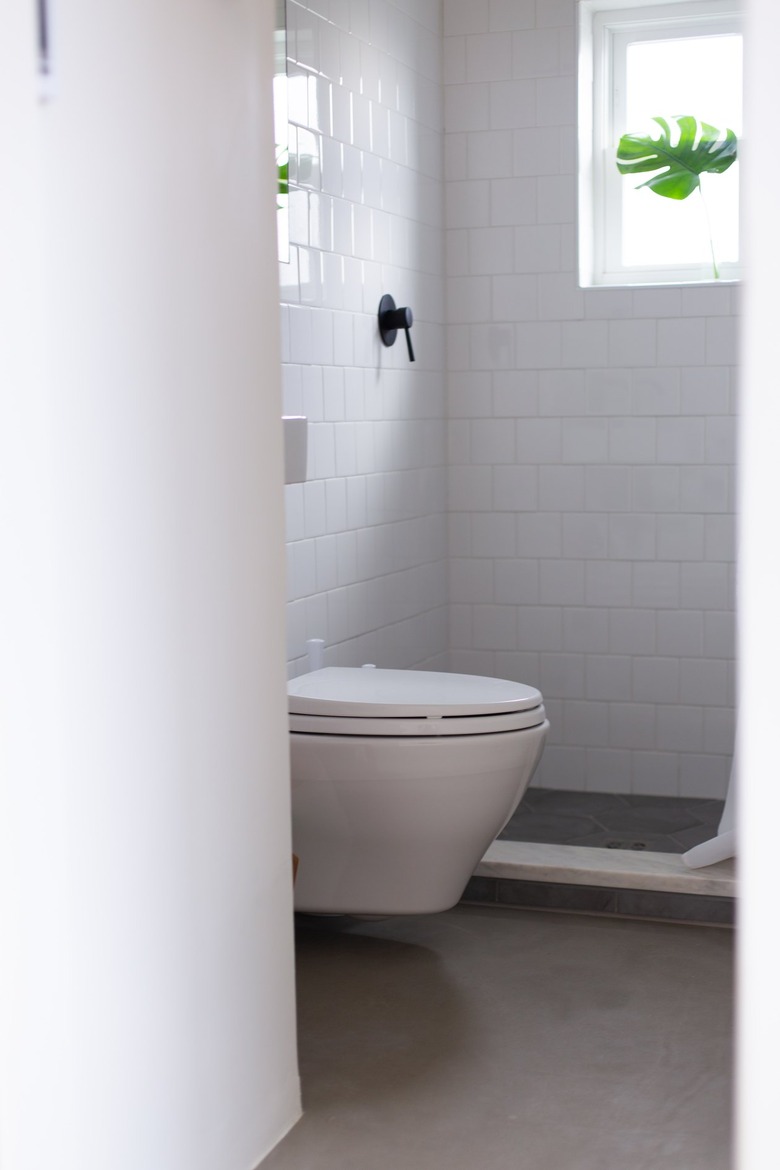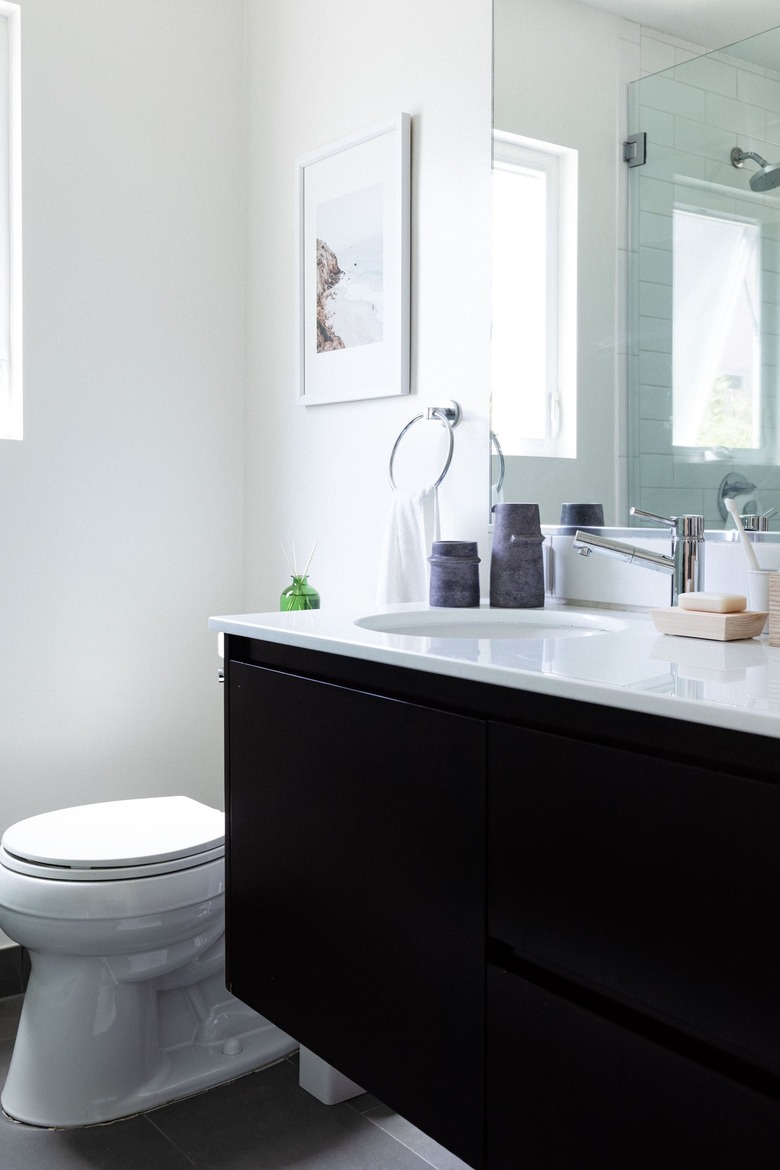How To Replace A Toilet Flapper
A toilet flapper is one of those "out of sight, out of mind" items that you may never think about—unless it starts to fail. This water-controlling device regulates flow from the toilet tank into the toilet bowl, but even more importantly, it keeps water from leaking into the bowl when it shouldn't. Eventually, it may not work as well as when it was new, allowing water to seep into the toilet bowl when it should not. This wastes water and increases your water bill.
Luckily, replacing a toilet flapper is a simple DIY project that doesn't require a plumber (or an expensive plumbing bill).
Toilet Flapper Basics
Toilet Flapper Basics
On a standard gravity toilet, which is the type most used in homes for generations, the working parts inside are fairly simple to understand. Remove the tank lid and set it in a safe place. Look for a flap or stopper-style device connected to a chain and sitting near the bottom of the tank — this is the toilet flapper. Flush the toilet and watch as the chain connected to the flush handle assembly lifts the flapper, allowing water to flow from the tank into the toilet bowl.
As the tank water lowers and the toilet bowl fills, the flapper drops back into position, sealing the hole at the bottom of the tank. When it is working properly, the flapper won't allow any water seepage when it sits at rest over the hole.
Symptoms of a Failing Flapper
Symptoms of a Failing Flapper
If you hear water running for a few seconds in your home when no one is using water, there's a good chance it's a toilet issue. In many cases, those intermittent bursts of running water are the toilet's fill valve, connected to the water supply line behind the toilet, filling the tank again when it detects a lowering tank water level. If there doesn't seem to be any other issue causing the toilet to run, then it's probably the flapper.
To check if the flapper may be the problem, do an experiment: push down on the flapper and see if the noise stops. If it does, then the flapper should be replaced.
Another way to test the flapper is with food coloring. Put four or five drops of blue or green food coloring in the toilet tank and then swirl the water a bit using any object that won't be harmed by the dye or water, such as an old toothbrush you're about to replace. If necessary, add a few more drops or just enough to tint the tank water so it is noticeably blue or green. Wait 30 to 45 minutes and then check the toilet bowl. If the bowl water is blue or green, a faulty toilet flapper is likely the issue.
Removing the Toilet Flapper
Removing the Toilet Flapper
While toilet flappers come in standard 2-inch and 3-inch sizes, they're not all exactly the same. It's important to purchase the same model or another brand's product designed as a replacement for yours to ensure a watertight fit. For best results, remove the old flapper and take it with you to a store or look at it closely to compare with images if you are ordering online to ensure a suitable replacement.
- Turn off the toilet's water supply line, located behind the toilet near the wall, by turning its handle clockwise. You'll know the water is off if you flush the toilet and the tank does not refill. Flushing also helps remove excess water in the tank.
- Remove the tank lid and set it in a safe, out-of-the-way location.
- If the tank still contains enough water to cover the flapper, maneuver the flush handle to lift up the flapper, allowing water to exit. The goal is to get the water level lower than the flapper simply to make it a bit easier to remove the flapper without soaking your hand in cold tank water.
- Take a picture of the inside of the tank so you can see where and how the chain connects to the flush lever assembly and to the flapper. This will come in handy so you don't have to try multiple chain adjustments for the new flapper.
- Unhook the chain where it connects to the flush lever.
- Examine the arms holding the flapper to the pegs on the sides of the flush valve, which is the large tube next to the flapper. For some flappers, this means simply lifting the arm hooks off the pegs one at a time. For others, it may involve wiggling each flapper arm sideways off the pegs. Lift the flapper out of the toilet once it's free.
- Wipe off the top of the opening where the flapper usually sits using a damp paper towel. This removes any residue that may be preventing a good seal, according to PlumbingSupply.com.
- Measure the flapper across its top to determine whether it's the 2-inch or 3-inch variety, which should help narrow down your choices for purchasing a new one.
Installing the New Flapper
Installing the New Flapper
The new flapper installs in just a few minutes in many cases. The toilet's water supply should still be off.
- Connect one end of the flapper chain to the new flapper if it isn't already in place in the package.
- Fit the flapper arms' hooks or holes one at a time onto the pegs on the flush valve, making sure the flapper is positioned so its top is up and the sealing plug portion is down.
- Connect the other end of the chain to the flush lever. It should go into the same hole position and at the same link of chain as your old flapper. Look at the image you took earlier if necessary.
- Turn the water supply back on by turning the handle counterclockwise. The tank should start to fill.
- Once the tank is full and the water stops running, flush the toilet to ensure that the flapper opens and closes as expected. If it doesn't open enough, reconnect the chain on the flush lever so the chain length is shorter. If the flapper doesn't seal all the way, reposition the chain length on the flush lever so the chain is longer. It may take a few tries to get it perfect.
- Replace the tank lid once you are happy with the results.

